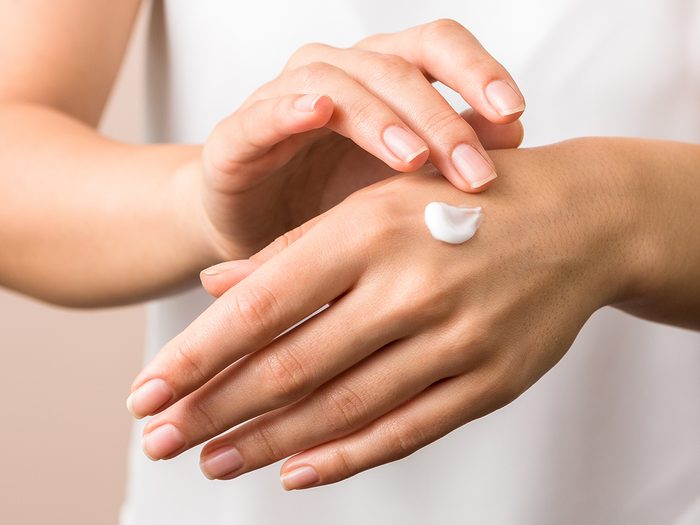What You Need to Know About Dry Skin

Cold air, dry indoor heating and extra handwashing might make this the itchiest winter ever.
To feel smooth and supple, the top layer of your skin—the stratum corneum—needs to be at least 10 per cent water. Any less than that, and your skin can’t properly shed the outer cells. That buildup causes cracks and flakes to form, leaving your skin feeling dry, scaly and sometimes itchy. Use moisturizer and drink at least two litres of water per day for general hydration.
On top of your skin’s outer layer is the acid mantle, which includes a thin film of sebum—the oil naturally produced by your skin. Beneficial bacteria thrive here and act as a line of defense against harmful bacteria, but when your acid mantle is damaged—either through over-scrubbing or hand sanitizers—your skin is more vulnerable to dryness and irritation.
Since hot showers or baths can melt the sebum, the Canadian Dermatology Association recommends bathing with warm (not hot) water for no more than 10 minutes a day. While your acid mantle does repair itself within a day, repeated long-term damage can leave your skin chronically angry.
An inherited deficiency in the lipid matrix—the mortar that helps keep skin intact—is among the many environmental and genetic factors that bring about eczema. That condition, which affects 17 per cent of Canadians, causes itchy, red, scaly patches. Fish oil supplements and foods rich in omega-3 fats, like salmon, have been shown to reduce symptoms.
The complex web of capillaries and other blood vessels in the dermis allow your skin to be a window into your overall health. For instance, itching can be an early symptom of diabetes, caused by excess blood sugar and poor circulation. And liver problems, such as hepatitis C, can cause rashes from the buildup of toxins in the blood. Call your doctor if you notice unexplained skin changes.
Next, check out what to always do if you want to avoid dry skin in winter.






